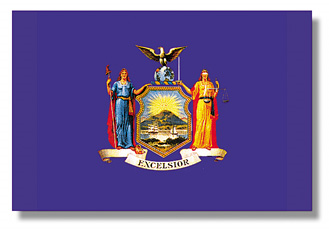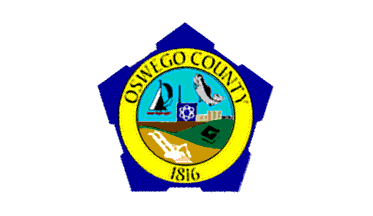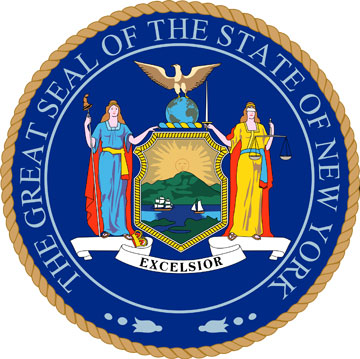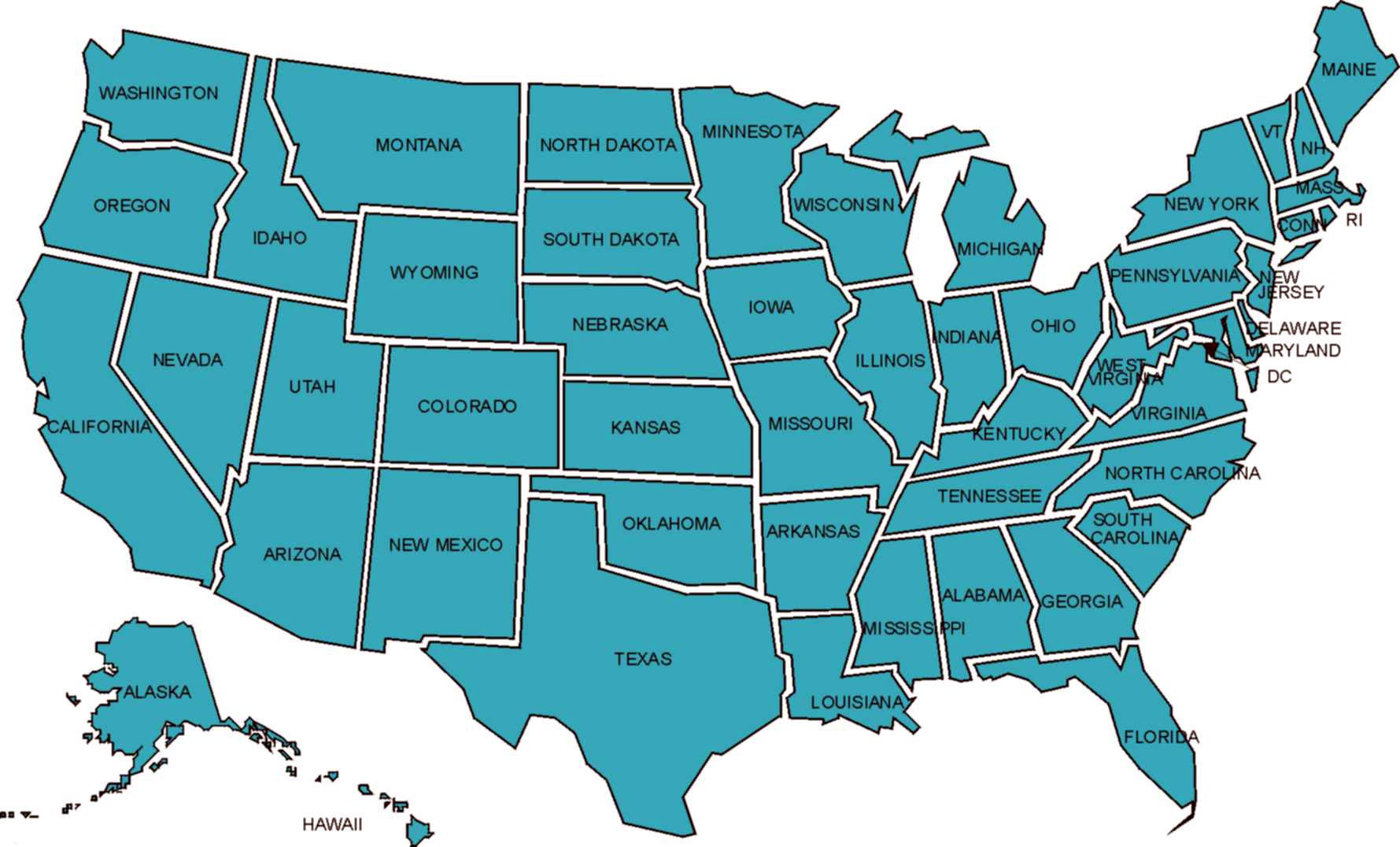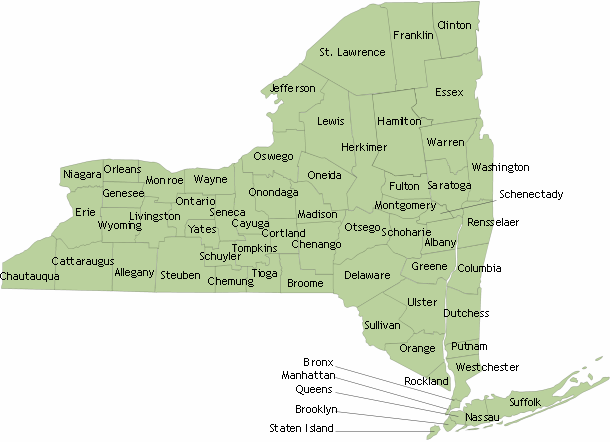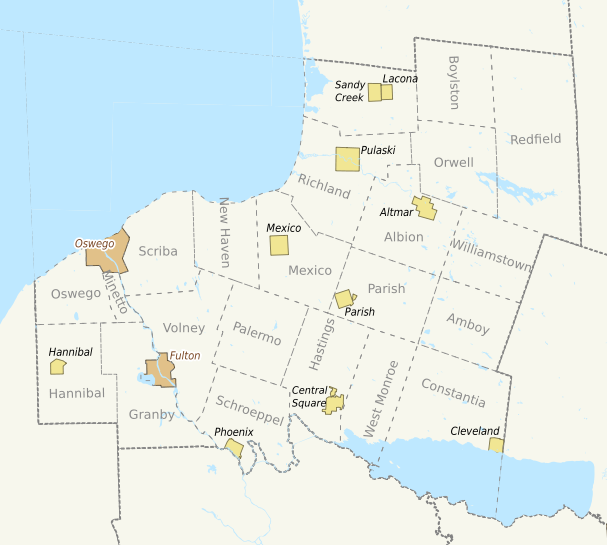New York State Courts
New York State Judicial System
The State Constitution establishes a unified court system for New York State. All courts, except those of towns and villages, are financed by the state in a single court budget. Administration of the courts is the responsibility of a single administrator, having statewide authority, who acts in accordance with policy direction supplied by the Chief Judge of the Court of Appeals.
The courts that compose the state's judicial system generally may be arranged on three functional levels: (1) appellate courts, including the Court of Appeals and the Appellate Divisions of Supreme Court; (2) trial courts of superior jurisdiction, including the Supreme Court and various county level courts; and (3) trial courts of inferior jurisdiction, including the New York City civil and criminal courts and various district, city, town and village courts upstate.
The court system in New York is one of the three separate branches of state government (Executive, Legislative and Judicial), and it plays an integral role in both state and local governmental operations. The courts are charged with: interpreting provisions of the State Constitution and laws enacted by state and local governments; resolving disputes between private citizens or between a private citizen and a state agency; exercising jurisdiction over persons accused of crimes and other violations of law; and adjudicating claims of individuals against state and local governments.
In 1962, New York made its first court reorganization in more than a century by completely revising the judiciary article of the State Constitution (Article VI). This new article continued or established the various courts that now comprise the New York court system. It also prescribed the number of judges and justices for each of these courts, their method of selection, and their terms of office (Table 3). The new article also created an administrative
FIGURE4
New York State Unified Court System
Current Trial Court Structure
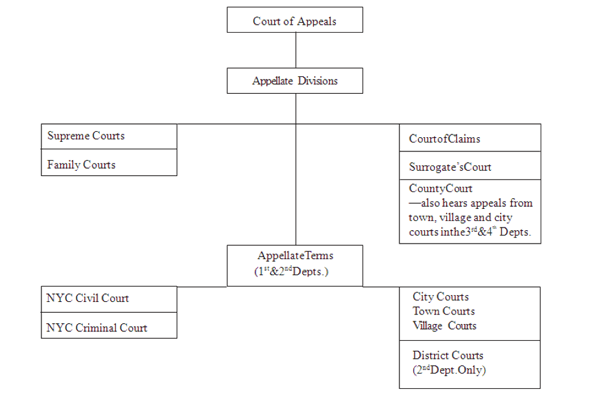
TABLE 3
New York State Court System Characteristics
| Court | No. of Judges | Selection Process | Term |
| Court of Appeals | 7 | Gubernatorial appointment with advice and consent of Senate upon recommendation of a commission on judicial nomination | 14 years1 |
| Appellate Divison | 24 permanent; number of temporary judges | Gubernatorial designation from among duly elected Supreme Court justices | Presidingjustice:14years, or balance of term as Supreme Court justice1 Associate justice(perma- nent):5 years or balance of term as Supreme Court justice1 |
| Appellate Term | Varies | Designated by Chief Administrator of Courts, with approval of presiding justice of the Department,from among duly elected Supreme Court justices | Varies |
| Supreme Court | 328 2 | Elected | 14 years1 |
| Court of Claims | 26 | Gubernatorial appointment with advice and consent of Senate | 9 years or, if appointed to fill a vacancy, the period remaining in that term1 |
| Surrogate's Court | 31 3 | Elected | 14 years in New York City1 10 years outside the City1 |
| Family Court | 127 | Mayoral appointment in New York City. Elected out side the City | 10 years or, if appointed to fill a vacancy, the period remaining in that term1 |
| Civil Court of New York City | 120 | Elected | 10 years1 |
| District Court | 50 | Elected | 6 years1 |
| City Court | 162 | Most elected, some appointed by Mayor of Common Council | Varies1 |
| Town Court | Approx 2,000 | Elected | 4 years |
| Village Court | Approx. 570 | Elected | Varies; most are 4 years |
| Criminal Court of New York City | 107 | Mayoral Appointment | 10 years or,if appointed to fill a vacancy,the period remaining in that term1 |
| County Court | 129 4 | Elected | 10 years1 |
1 Mandatory retirement at end of year in which Judge reaches age 70, with limited potential exceptions for Supreme, Appellate and Court. of Appeals justices.
2 Includes justices designated to the Appellate Division and Terms. Does not include certified justices of the Supreme Court (which number may vary significantly each year).
3 Includes only separately elected surrogates.
4 Includes 72 county judges and 57 multi-hatted county-level judgeships.
Court of Appeals
Established in 1846, the New York Court of Appeals has emerged as the great common law court at the apex of the state court system. In criminal cases where the judgment is death, appeals may be taken directly to the Court of Appeals from a court of original jurisdiction; in other cases appeals may be taken as the Legislature provides. Review of death judgments includes both questions of law and fact. Otherwise, review is usually limited to questions of law. In civil cases, appeals may be taken as of right or by permission, depending on the finality of the determination from which an appeal is sought, the issues involved, the court in which the action or proceeding originated, and whether there was disagreement in the court below.
The Court of Appeals consists of a Chief Judge and six Associate Judges. Each judge serves a term of 14 years or until the end of the calendar year in which he or she reaches age 70, whichever occurs first. Vacancies on the court are filled by gubernatorial appointment from among individuals found to be qualified by a nonpartisan Commission on Judicial Nomination. In order to be eligible for appointment, candidates must have been admitted to the practice of law in New York for at least 10 years. All appointments must be approved by the State Senate. The Governor is empowered to designate justices of the Supreme Court to serve as additional Associate Judges on the Court ofAppeals during times of heavy caseload.
Generally, all seven judges of the Court of Appeals hear each case, although the Constitution requires only a quorum of five judges. In every case the concurrence of at least four judges is necessary for a decision.
The operations of the Court of Appeals are supervised and controlled by the court itself, the Chief Judge, and the clerk of the court. The Chief Judge serves as the principal officer of the court and oversees its maintenance and operation. The Chief Judge presides at the hearing of arguments and at the conference of judges during which decisions are reached.
Appellate Division
Established in 1894, the Appellate Division of the Supreme Court serves a very important function in the administration of justice in New York State. The four courts of the Appellate Division correspond geographically to the four Judicial Departments on the map in Figure 3.1. They are constituted as courts of intermediate appellate jurisdiction. For all practical purposes, however, they serve as courts of last resort; 90 percent of the cases they hear are not subsequently reviewed by the Court of Appeals.
Under the State Constitution and implementing statutes, appeals in civil matters are taken to the Appellate Divisions from each of the trial courts in the unified court system, except the New York City Civil Court, and district, town, village and city courts outside the City of New York. On an appeal, the Appellate Division reviews questions of law and questions of fact. Appeals in criminal matters are taken to the Appellate Division from County and Supreme Courts. As in civil cases, the Appellate Division reviews questions of fact and questions of law in criminal appeals. The Appellate Division also has original jurisdiction in a limited number of cases.
The State Constitution authorizes the First and Second Judicial Departments to have seven justices while the Third and Fourth Judicial Departments are each authorized to have five justices. The Governor can assign additional justices to each of the courts to assist with the case load. Justices of the Appellate Division, other than the presiding justice, are designated by the Governor from among the justices elected to the Supreme Court. The term of office of each justice is five years, but is limited to the end of the calendar year in which the justice reaches age 70. However, Associate Justices who have been certified for continued service may be designated to remain on an Appellate Division bench beyond this retirement age. While the Governor is not generally limited to choosing justices who reside in the Judicial Department where a vacancy exists, the Constitution requires that a majority of the justices designated to sit in any Appellate Division shall be residents of that Department.
The presiding justice of each Appellate Division is designated by the Governor from among the Supreme Court justices in that Department. The term of office of the presiding justice equals the period of time remaining in his or her term as a Supreme Court justice. From time to time, as terms expire or vacancies occur, the Governor makes new designations. The Governor is also empowered to make additional designations during times of heavy caseload or when a sitting justice is unable to serve for a period of time.
The Appellate Division courts generally sit in panels of five justices, although panels of four justices are authorized. In every case the concurrence of at least three justices is necessary for a decision. The operations of the Appellate Division are supervised and controlled by each court itself, its presiding justice, and the clerk of the court.
FIGURE 5 - Judicial Districts of the State of New York
First Department – I, XIII
Second Department – II, IX, X, XI
Third Department – III, IV, VI
Fourth Department – V, VII, VIII
Appellate Term
The Constitution authorizes the Appellate Division in each judicial Department to establish an Appellate Term for that Department or a part of that Department. The Appellate Terms are conducted by no more than three Supreme Court justices who have been specially assigned to the terms. Two justices constitute a quorum, and the concurrence of at least two is necessary for a decision. Where they have been established, Appellate Terms exercise jurisdiction over civil and criminal appeals from local courts and certain appeals from county courts. At the present time, Appellate Terms have been established only in the First and Second Departments.
Supreme Court
The Supreme Court, as presently constituted, was established in 1846. Formed by the consolidation of the offices of circuit judge and chancery judge with the preexisting Supreme Court, it is now considered a single court having general original jurisdiction in law and equity.
Under this broad constitutional grant of jurisdiction, the Supreme Court may hear any criminal or civil action or proceeding irrespective of its nature or amount, except claims against the State. In practice, however, the Supreme Court outside New York City principally hears civil matters, and the County Courts hear criminal matters. In New York City, the Supreme Court sits in both civil and criminal parts.
Justices are elected for 14-year terms by electors within their judicial districts. Retirement is mandatory at the end of the calendar year in which a justice reaches age 70, but justices can be certified for up to three two-year periods after reaching 70. A justice of the Supreme Court must have been admitted to practice law in the state for at least 10 years before assuming office. The number of justices for each judicial district is prescribed by the State Legislature, subject to a constitutionally prescribed maximum number
Court of Claims
From 1777 until 1897, New York State did not permit any claim for damages to be asserted against it in any court. During that period, the state was entirely immune from suit in its courts. Individuals suffering injury to their persons or property through the activities of public employees were not however, wholly without remedy, as they could petition the Legislature for redress in the form of private legislation. In 1817, an administrative remedy was made available for some claims related to the Erie Canal. From this modest 1817 provision, the Court of Claims evolved through many enactments, culminating in Chapter 36 of the Laws of 1897.
Article VI, section 9, of the Constitution provides:
"The Court shall have jurisdiction to hear and determine claims against the state or by the state against the claimant or between conflicting claimants as the legislature may provide."
Implementing this grant of authority, the Legislature has provided that the Court of Claims shall have jurisdiction over claims against the State for appropriation of real or personal property, breaches of contract, and torts. The Legislature also has specifically granted the court jurisdiction to hear claims involving: wrongful acts by members of the military; military employees in the operation of any vehicle or aircraft; and claims of imprisoned convicts later pardoned as innocent by the Governor. The court serves as a forum for claims by or against the State and certain public authorities. It does not possess the power to grant claims against political subdivisions such as counties, cities, towns and villages. These claims are litigated in the Supreme Court.
The Court of Claims currently consists of 26 judges, who hear claims against the State. The court holds two trial terms each year in each of its 9 districts throughout the state. Claims are usually tried and decided by one judge, unless the presiding judge appoints up to three judges to sit in a particular case. Judges of the Court of Claims are appointed by the Governor, by and with the consent of the Senate, for nine year terms (although retirement is mandatory at the end of the calendar year in which the judge reaches age 70). A judge must have been admitted to practice law in the state for at least 10 years before he or she may begin to serve on the bench.
County Court
A County Court sits in each of the 57counties of the state outside the City of New York. Under the State Constitution, they have unlimited criminal jurisdiction, but their civil jurisdiction is limited to money claims for not more than $25,000. The County Court also has limited appellate jurisdiction; in the Third and Fourth Judicial Departments, it hears appeals from civil and criminal judgments of justice courts and city courts.
The State Constitution of 1846 declared that there should be elected in each of the counties of the state, except the City and County of New York, one county judge, who should hold office for four years. The term of office has been changed to 10 years, but the office has remained elective. A candidate, to be eligible for election, must have been admitted to practice law in the state for at least five years and must be a resident of the county. Retirement is mandatory at the end of the calendar year in which a judge turns 70 years of age.
The Constitution authorizes the Legislature to provide that the same individual may hold two or all of the positions of county, surrogate and family court judge at the same time. There are many so-called "two-hat" and "three-hat" judges in upstate counties.
Surrogates Court
The existence of the Surrogate's Court in New York can be traced back to colonial times, when early Dutch officials exercised jurisdiction over estate matters. This practice continued through the British colonial period. The granting of letters of administration and the probate of wills in the State of New York became the responsibility of the Governor. In discharging this responsibility, the Governor was authorized to appoint a delegate to act in his stead. One of the early delegates used the title of "surrogate."
The State Constitution (Article VI, section 12) provides that the Surrogate's Court shall have jurisdiction over all actions and proceedings relating to:
• the affairs of decedents, probate of wills and administrtion of estates;
• the guardianship of the property of minors; and
• such other actions and proceedings, not within the exclusive jurisdiction of the Supreme Court, as may be provided by law.
In practice, the court's jurisdiction, which includes such equity jurisdiction as may be provided by law, extends to, among other proceedings: the probate and construction of wills; grants of letters testamentary to executors; grants of letters of administration; proceedings for the payment of creditors' claims; proceedings by fiduciaries and claimants to determine the ownership of property; proceedings for the payment of bequests; grants of letters of trusteeship; appointment of guardians for infants and their property; and accountings by executors, administrators, trustees and guardians.
The State Constitution provides that there shall be at least one judge of the Surrogate's Court in each county and such number of additional judges as may be provided by law. Each judge of the Surrogate's Court, also known as a "surrogate," must be a resident of the county in which the surrogate serves and elected by the voters of that county. The term of office is 14 years within the five counties of the City of New York and 10 years in the other 57 counties. All surrogates are subject to mandatory retirement at the close of the calendar year in which they turn 70 years of age.
There is no constitutional requirement that the surrogate be a separately elected position. The Legislature has provided that where it is not, the county court judge shall discharge the duties of the surrogate, as well as those of the County Court.
Family Court
Viewed as one of the major accomplishments of the 1962 constitutional reorganization of the judiciary, the Family Court has emerged as a major entity in dealing with difficult issues involving children and families. The court sits in every county in the state outside of New York City and citywide in New York City.
The Family Court's jurisdiction is divided between matters that originate as provided by law and those that are referred to it from the Supreme Court. The court's original jurisdiction includes authority to adjudicate matters related to the:
• protection, treatment, correction, and commitment of minors;
• custody of minors;
• adoption of persons (shared concurrently with Surrogate's Court);
• support of dependents;
• establishment of paternity; and
• proceedings for conciliation of spouses and family offenses (shared concurrently with courts with criminal jurisdiction).
The Family Court, when exercising its jurisdiction over matters referred to it from the Supreme Court, has the same powers possessed by the Supreme Court.
In New York City, judges of the Family Court are appointed by the mayor for terms of 10 years. In counties outside the City of New York, judges of the Family Court are elected by the voters of the counties for terms of 10 years. All judges of the Family Court must retire at the end of the calendar year in which they turn 70 years of age.
Criminal Court of the City of New York
The Criminal Court of the City of New York is the busiest criminal court in the world. Constituted in its present form in 1962, the court has its roots in colonial days and is the product of an evolutionary process that culminated in the abolition of two court systems in the City - the Magistrates Court and the Court of Special Sessions - and their replacement by the Criminal Court of the City of New York. The court now has an authorized complement of 107 judges.
The Criminal Court of the City of New York has jurisdiction to adjudicate misdemeanors and offenses less than misdemeanors, and to conduct pre-indictment felony hearings. Most of the court's business consists of traffic violations, and violations of the Administrative Code of New York City or the Multiple Dwelling Law.
Judges of the Criminal Court must be residents of New York City. They are appointed for terms of 10 years by the mayor. Where a vacancy occurs for reasons other than expiration of a 10-year term, the mayor appoints a judge to fill the position for the balance of the unexpired term. Retirement is mandatory at the end of the calendar year in which the judge turns 70 years of age.
Civil Court of the City of New York
The Civil Court of the City of New York came into existence on September 1, 1962, when it was established through a merger of the City and Municipal Courts as part of the state's plan of court reorganization. The Civil Court is one of the busiest courts of civil jurisdiction in the United States. The court has jurisdiction over numerous civil actions, including contracts, actions for personal injury, real property actions, and actions in equity. The State Constitution, however, limits the civil jurisdiction in actions involving money claims to a maximum of $25,000.
The Civil Court has a special housing part, instituted in 1972, to assure the effective enforcement of state and local laws for the establishment and maintenance of proper housing standards in New York City.
The Civil Court also has a small claims part. Claimants may present a small claim without being represented by an attorney. Corporations, associations and assignees may not institute actions in the small claims part, although they may be sued as defendants. They may, however, institute small claims in the Court's commercial claims part, which observes the same informal, expedited procedures as the small claims part.
The Civil Court presently consists of 120 judges, selected for terms of 10 years by voters within New York City from "districts" established by the State Legislature. Retirement is mandatory at the end of the calendar year in which a judge turns 70 years of age.
District, Town, Village and City Courts
Minor civil and criminal litigation, as well as the early stages of major criminal litigation, arising outside New York City are handled by district, city, town and village courts. These courts of "inferior jurisdiction," as they are sometimes called, include some of the oldest of the state's courts - town justices date back to the seventeenth century - and some of the newest - the Nassau and Suffolk District Courts were established in 1937 and 1964, respectively. The population centers served by courts of inferior jurisdiction range from small cities, villages and towns, many of which have populations under a thousand, to counties having more than one million residents. These courts deal with a variety of matters, including simple traffic offenses, bill collection cases, felony hearings, and complex commercial litigation.
Town and village courts are staffed by full-time or parttime justices, who often are not lawyers. District courts and some of the city courts are staffed by full time judges who are lawyers. Court sessions are held in places ranging from the justice's living room or office, to rooms in town or village halls, to formal court houses. In some localities, court records are kept directly by the judicial officer. In others, records are kept by one or more fulltime or part-time clerks.
An initiative to achieve procedural uniformity in the lower courts in New York culminated in the enactment of sections of the Uniform Court Acts, which assure that procedures followed in these courts are substantially the same throughout the state.
Town Courts.
The town justice court is the oldest of the "inferior" courts in the state (see also, Chapter VII). Under the original town structure, justices of the peace were members of the town board and thus had legislative as well as judicial functions. The Town Law, adopted in 1934, substituted town councilmen for justices on the town board in towns of the first class. In towns of the second class, justices remained members of the town boards, although the town boards had the option - by resolution subject to permissive referendum - of providing that justices should not be members of the board. In 1976, the Town Law was amended again to preclude all town justices from serving on town boards during the tenure of their judicial office.All town justices of the peace formerly ran their courts independently, regardless of the number of justices in the same town. In 1962, however, the Court Reorganization Amendment integrated town justice courts into the unified court system, and the enactment of the Uniform Justice Court Act firmly established the single court concept in each municipality. All justices of a town are considered to be justices of the same court, and the proceedings of one justice are treated as acts of the whole court. The salaries of judicial and non-judicial personnel of a town justice court are funded by the town.
Village Justice Courts.
Although villages appeared as local governmental units as long ago as 1790, village justices have not played the same central roles in village organization as justices of the peace played in town development.The constitutional history of the office of village justice, formerly known as the police justice, starts with the Constitutional Convention of 1846. Until then, village police justices apparently were not the subject of general legislation. At the convention, a proposal was made to authorize the Legislature to create inferior local courts of civil and criminal jurisdiction in cities and villages. Today's village justice court traces its roots to that point in time.
A village justice court has the same jurisdiction within the village as a town justice court has within the town. The cost of village justice court operations is funded locally.
City Courts.
Since 1846, the Legislature has been authorized to create city courts of limited jurisdiction and to establish the tenure of city judges and the method of their selection. For many years, the resulting legislative enactments were framed as individual court acts, each affecting only one city. In 1988, however, the Legislature combined all provisions of law regulating city courts and their judgeships into a single section of law. Also, as has been done with town and village justice courts and the district courts, the Legislature has established general procedural and jurisdictional regulations in one consolidated statute of general applicability to all city courts in the state outside the City of New York - the Uniform City Court Act.District Courts.
The first district court was established in Nassau County in 1937, under the provisions of the State Constitution and the Alternative County Government Law. The only other district court now in existence is the district court of the First Judicial District of Suffolk County, comprising the towns of Babylon, Brookhaven, Huntington, Islip and Smithtown. It was created by the Legislature with the approval of the voters of those towns in 1963.Although there are only two district courts now in operation in the state, the State Constitution provides that a district court may be established in any area of the state where the local governing body of the affected area requests the State Legislature to establish such court and where both the Legislature and the voters of that area approve its establishment.
Jurisdiction.
District, town, village and city courts have limited civil and limited criminal jurisdiction, as defined in the Uniform CourtActs. In general, the civil jurisdiction of these courts is limited to claims for money damages not exceeding $15,000 in the district court and city courts, and $3,000 in the town and village justice courts, and to jurisdiction over summary proceedings for the recovery of real property. Each court also has jurisdiction over small claims, as discussed below. The criminal jurisdiction of these courts is identical to that of the New York City Criminal Court.Small Claims.
Each town, village, city and district court has a small claims part where money claims up to a maximum of $5,000 ($3,000 in town and village courts) may be heard and determined in accordance with more informal court procedures. Special jurisdictional requirements must be met before a suit may be brought in a small claims part. If suit is brought in a town or village justice court, the defendant must reside or have an office for the transaction of business or a regular employment within the municipality in which the court is located. If brought in a city court, the defendant must reside, have an office or be regularly employed within the county in which the court is located. If brought in a district court, the defendant must reside, have an office or be regularly employed within the territory embraced by the court.City and district courts also have commercial claims parts where money claims up to a limit of $5,000 may be brought by businesses and heard and determined as in small claims parts.
State rules provide for a simple, informal and inexpensive procedure for prompt determination of small claims and commercial claims. Such claims must receive an early hearing and determination, and the hearings must be conducted in such a way as to ensure substantial justice between the parties according to the rules of substantive law. The parties are not, however, bound by statutory provisions or rules of practice, procedure, pleading or evidence.
Court Financing
Effective April 1, 1977, New York adopted a unified court budget system. Under this system, the state took over the entire non-capital cost of the operation of all courts and court-related agencies of the unified court system, except town and village justice courts.
Disciplining of Judges
Effective April 1, 1978, new constitutionally mandated procedures for the disciplining of judges were established. A Commission on Judicial Conduct, comprising 11 persons selected from the community by the Governor, the Chief Judge of the Court of Appeals, and the leadership of the Legislature, has primary responsibility for the investigation and initial determination of complaints against judges. The Commission may admonish, censure, remove or retire judges against whom complaints are sustained. The Court of Appeals may review all determinations. The State Constitution authorizes two other methods by which judges who are found guilty of misconduct may be removed from office, both of which require action by the Legislature: removal by impeachment and removal by concurrent resolution of the Senate andAssembly. Neither method is frequently used.
Court Administration
Effective April 1, 1978, the structure of court administration in New York changed considerably. The principal features of the new system include:
• appointment of a Chief Administrator of the Courts by the Chief Judge of the Court of Appeals, with the advice and consent of an Administrative Board of the Courts;
• central administrative direction of the courts by the Chief Judge and the Chief Administrator;
• approval by the Court of Appeals of statewide standards and policies governing the operation of all courts;
• promulgation by the Chief Judge, and approval by the Court of Appeals, of a code of conduct for judges; and
• frequent consultation with the Administrative Board of the Courts in court management decisions.
The Chief Administrator has numerous duties. Among the most significant are: preparing the judiciary budget; establishing the terms and parts of court and assigning judges to them; engaging in labor negotiations with unions representing non-judicial employees of the courts; and recommending to the Legislature and Governor changes in laws and programs to improve the administration of justice and court operations. To assist in the performance of these duties, the Chief Administrator has established an Office of Court Administration, staffed by lawyers and management experts. The Chief Administrator has also delegated responsibility to a cadre of administrative judges, each serving on a regional basis. The Office of Court Administration seeks to reduce the caseload in the state's courts through an alternative approach to resolving problems that develop between people - the Community Dispute Resolution Centers Program. Under the program, which was authorized by the Legislature in 1981 and made a permanent part of the Unified Court system in 1984, the Chief Administrator of the Courts contracts with nonprofit community agencies to provide mediation assistance to help disputants reach mutual agreement. Now operating statewide, these centers take referrals from judges, law enforcement agencies, individuals and others. They handle such matters as animal complaints, breaches of contract, domestic arguments, harassment, landlord/tenant problems, noise complaints, petty larceny, school problems, small claims and ordinance violations.

